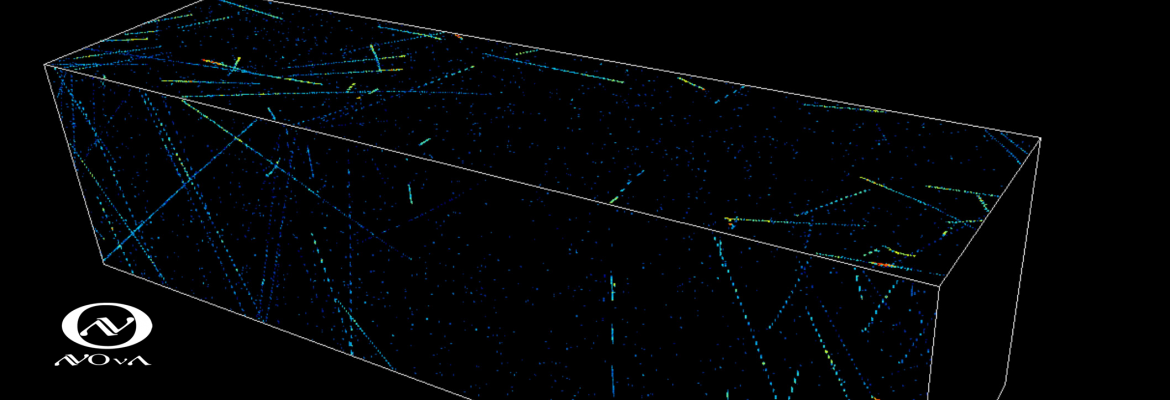Scientists represent neutrinos with the Greek letter nu, or v.
Neutrinos are among the most abundant particles in the universe, a billion times more abundant than the particles that make up stars, planets and people. Unimaginably large numbers of neutrinos from the first moments of the universe are still present today.
Though a trillion naturally occurring neutrinos from the sun and other bodies in the galaxy pass through us each second, they interact so rarely with other particles that they are very difficult to detect. That is why researchers strive to create intense beams packed with as many neutrinos as they can produce and to build large, precise detectors that can spot them when they interact.
Neutrinos have no electric charge and come in three kinds, or “flavors,” as scientists call them. They have a mass, but the heaviest neutrino is nearly a million times lighter than the lightest charged particle.
History

A trillion naturally occurring neutrinos from the sun and other bodies in the galaxy pass through us each second. (Credit: symmetry magazine)
In 1930, the Austrian-born physicist Wolfgang Pauli predicted the existence of the particle we call the neutrino. He came up with the idea of the neutrino in response to a dilemma: He observed that, in the aftermath of a reaction in which a neutron transformed into a proton and electron, some energy and some angular momentum seemed to vanish. The sum of energy and momentum after the decay event did not add up to the sum of energy and momentum before the decay event. Pauli was confronted with a mystery. To solve it, he proposed a new particle, the neutrino. If he factored the neutrino into the picture, it would carry the missing energy and momentum.
A careful accounting of the energy and momentum before and after the decay showed that if a particle were indeed slipping away undetected, it must be uncharged, or neutral, and must have practically no mass and almost no interactions with matter. In other words, Pauli had invented a particle that would be almost impossible to observe. He himself thought that experimenters might never find proof of the existence of neutrinos.
Pauli was almost right — but not quite. As often happens, developing technology led indirectly to a breakthrough in basic science. Calculations showed that newly developed nuclear reactors should produce huge numbers of neutrinos — a large “neutrino flux” — as a byproduct. Inspired by the challenge of finding a particle that was considered impossible to detect, Frederick Reines and his colleague Clyde Cowan set about trying to detect neutrinos from the nuclear reactor at Savannah River, South Carolina. In 1953, with an experiment that would eventually earn the 1995 Nobel Prize in physics, Reines and Cowan found direct evidence for Pauli’s neutrino.
Today, neutrinos are an integral part of the theory of the fundamental particles and forces of nature.

